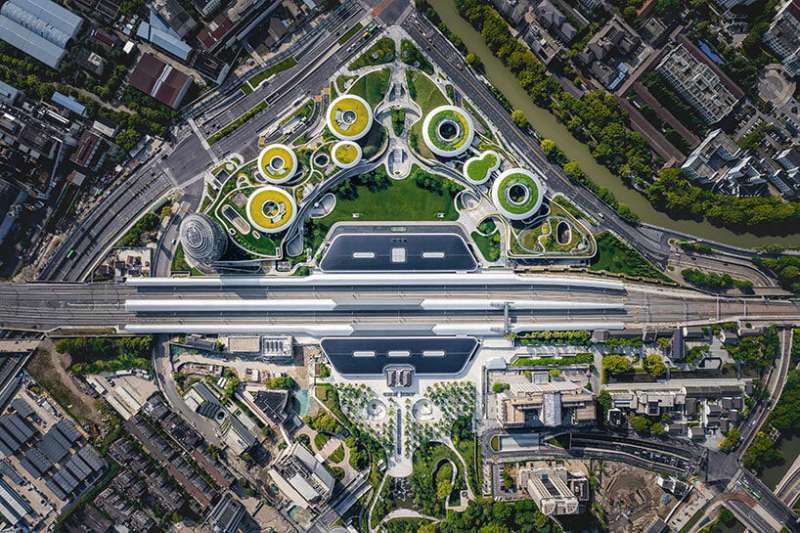The Jiaxing Train Station, MAD Architects’ first transportation infrastructure project, has been completed, the architecture firm said. Situated 100 kilometers southwest of Shanghai in the ancient city of Jiaxing, the project entails replacing an inoperable station that was in place from 1995 to 2019. As China’s population has become more urbanized, its rail stations have become increasingly intricate, dispersed, and unwelcoming infrastructures. With this proposal, MAD Architects hopes to bring the building back to a human scale, adapt to the most recent advancements in transportation technology, and create user-friendly, comfortable places.
Constructed in 1907, the old Jiaxing Train Station was demolished some decades later. Although a new station was constructed in 1995, it lacked sufficient passenger facilities and was out of date for a rapidly growing city. In order to handle the extra facilities, MAD Architects’ intervention restores the appearance of the 1907 station and pairs it with a “floating” metal roof. Based on copious quantities of historical data, the old station house recreation employs over 210,000 locally produced red and green bricks.
The general layout aims to provide a more effective and human-centered solution. A glass façade behind the rebuilt station gives it a simple, uncluttered appearance. The waiting area, ceiling, and tunnel walls are covered in quiet-absorbing anodized aluminum honeycomb panels to further subdue noise. Every utility is discreetly included into the overall design.
To enable the growth of its forest-like surrounds, the majority of the primary operations are set up beneath. The location now has almost 1,500 trees planted. Buildings devoted to trade and culture are arranged around a square in the southern portion of the property. These useful spaces are dispersed across the hills, giving the impression of floating rings, and a central lawn is anticipated to host a variety of outdoor activities, including festivals and concerts.
By 2025, 5.28 million people are anticipated to be welcomed under the master plan annually. Along with commercial activities, a range of transit routes are integrated throughout the southern portion of the property. In addition to meeting the growing demands of passengers, MAD’s scheme emphasizes environmental connectivity and uses this major infrastructure project as a chance for urban rebirth through careful traffic planning and vertical space utilization.
Recently, the plans for the Nanhai Art Center, a community and cultural hub with a wave-like shape and a new public entrance to the shoreline, in Foshan City, Guangdong, were revealed by MAD Architects. In addition, the office is looking forward to the reopening of the Museum of Migration in Rotterdam. This project involves rehabilitating a 16,000-square-meter industrial facility that previously helped millions of people migrate over the 19th and 20th centuries.
Topics #China #forest #MAD #Train Station










